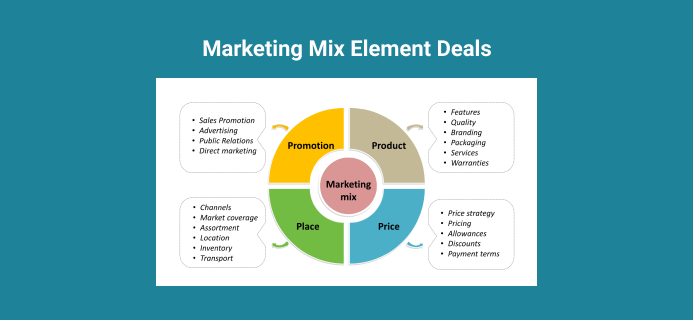Question: Which marketing mix element deals specifically with retailing and marketing channel management?
Correct Answer: Place
Which marketing mix element deals specifically with retailing and marketing channel management? Actually, marketers don’t promote; they demonstrate the worth they offer to the customers.
The term marketing mix is a foundation model for businesses, historically centered around promotion, place, price, and product. The marketing mix helps you to know the marketing elements for prosperous positioning your store offer.
Besides, price is involved in the capture of value in the marketing exchange. The right arrangement of marketing mix by marketing managers plays a vital role in the success of a firm. There are many companies that consider marketing mix as a set of strategies and actions in order to promote their goods and services.
Which Marketing Mix Element Deals Specifically With Retailing And Marketing Channel Management?
The answer to the question “which marketing mix element deals specifically with retailing and marketing channel management?” is place. This marketing mix is concerned with the channel that is used to deliver goods and services to the customers.
Keep in mind; marketing mix is a combination of 4Ps i.e., Place, Promotion, Product, and Price. Each of these factors has different objectives and significance. You can also consider marketing mix as the set of marketing tools that a company utilizes to pursue its marketing goals.
You need to understand that place is a vital factor because signifies where marketing takes place and which path customer uses to deliver goods and services to them.
Four Elements Of Marketing Mix That You Should Know
As already discussed above, the 4Ps of the marketing mix are the key elements that include in the advertisement of a product or service. Product, Place, Price, and Promotion are restrained by internal and external factors in the overall business environment, and they interact with one another.
A lot of hard work requires in finding out what customer actually wishes and recognizing where they do their shopping. One of the best places to start is the marketing mix when you are thinking through your plans for a service or a product.
Now, let’s discuss the top four elements of the marketing mix that you should know in 2021.
1. Promotion
Promotion includes promotional strategy, public relations, and advertising. The objective of promoting a product is to talk to customers and know what they actually need. At the same time, they should pay a certain amount for it.
On the other hand, you must know how do your competitors promote their products and what are strategies they implement to target the audience. There is always the best time to promote your goods and services and this is a vital element for a successful business.
2. Place
Every marketing firm makes a decision for the place where they will sell their product and deliver the same to the market. Actually, the place is important because this is where buyers look for your product or service.
Marketing of goods can be done anywhere: online and offline. In many situations, placement may refer to the act of including goods on web pages, films, television shows, etc. Therefore, this is the reason why the place is important in the marketing mix. This is the element that deals specifically with retailing and marketing channel management.
3. Price
Price is the cost consumers pay for goods. Marketers must link the price of the goods in real and must also include supply costs. They may also raise the cost to make the product look more luxurious.
Keep in mind, a small gain or decrease in price can affect your market share to a great extent. However, you can offer some seasonal discounts to your customers and increase your conversions.
4. Product
Product refers to goods and services that a firm offers to customers. As a part of the marketing industry, you need to understand the lifecycle of a product and must include a strategy that takes your business to the next level of success.
At the same time, make sure that you offer genuine products to your customers so that you can increase the loyalty of your customers as well as conversions. The type of product determines where should the owner promote his products and how he can target his customers to buy the same.
The Final Thoughts
A place is an answer to your question “Which marketing mix element deals specifically with retailing and marketing channel management?” The above-described information highlights the reason for this and if you have any queries, mention them below in the comment section.
Read Also:
























